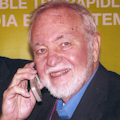The idea of sharing valuable spectrum has been around forever and is already implemented in many systems. Yet to deal with the never-ending demand for higher Internet speeds, more spectrum is needed even though there is little or none to use for growth. More sophisticated spectrum sharing methods like those used for white space radio may be the answer.
Multiple users can share the industrial-scientific-medical (ISM) bands without problems. Wi-Fi, Bluetooth, ZigBee, cordless phones, microwave ovens, and many industrial products currently share the band from 2.4 to 2.483 GHz. Yet all communications are generally successful and interference-free.
The short-range, low-power, widely different modulation and access methods ensure minimum interference. Also, successful coexistence measures taken by the Wi-Fi and Bluetooth vendors have reduced the potential for interference. The 5-GHz ISM band will have similar success.
In the cellular industry, the carriers already share their spectrum with themselves. They employ frequency-reuse methods to use the same frequencies again and again in different cells. This is possible because of the shorter range, lower power, tower height adjustments, and directional antennas.
A key technique in frequency sharing is antenna polarization and beamforming, which are part of a technique called spectral diversity. For instance, two radio signals may share the same frequency by simply using different antenna polarizations. One may use vertical polarization, and the other horizontal polarization. Alternately, one antenna may use right-hand circular polarization (RHCP) while the other uses left-hand circular polarization (LHCP).
Beamforming antennas narrow the coverage area despite any close range while boosting power. Multiple-input multiple-output (MIMO) techniques also can be deployed, as they transmit multiple data streams on the same frequency but over different antennas and signal paths. Finally, the cognitive radio techniques of white space radios can ultimately be used to share spectrum. Such techniques are already in use by the military.
Spectrum sharing is an approach whose time has come. In addition to encouraging government and the military to give up or repurpose spectrum, sharing spectrum may eventually become a common method. Many proposed approaches are being considered, including geographic, time-based, sensing, and database.
Some techniques for better sharing spectrum are being developed for the AWS3 cellular band (1755-1780 MHz, 2155-2180 MHz, and 1695-1710 MHz) and the proposed 3.5-GHz cellular band (3650-3650 MHz and potentially 3650-3700 MHz). The approaches are extremely complex. Furthermore, new policies, rules, and regulations will have to be developed and put into place. Spectrum sharing is a promising work in progress.
About the Author

Lou Frenzel
Technical Contributing Editor
Lou Frenzel is a Contributing Technology Editor for Electronic Design Magazine where he writes articles and the blog Communique and other online material on the wireless, networking, and communications sectors. Lou interviews executives and engineers, attends conferences, and researches multiple areas. Lou has been writing in some capacity for ED since 2000.
Lou has 25+ years experience in the electronics industry as an engineer and manager. He has held VP level positions with Heathkit, McGraw Hill, and has 9 years of college teaching experience. Lou holds a bachelor’s degree from the University of Houston and a master’s degree from the University of Maryland. He is author of 28 books on computer and electronic subjects and lives in Bulverde, TX with his wife Joan. His website is www.loufrenzel.com.
